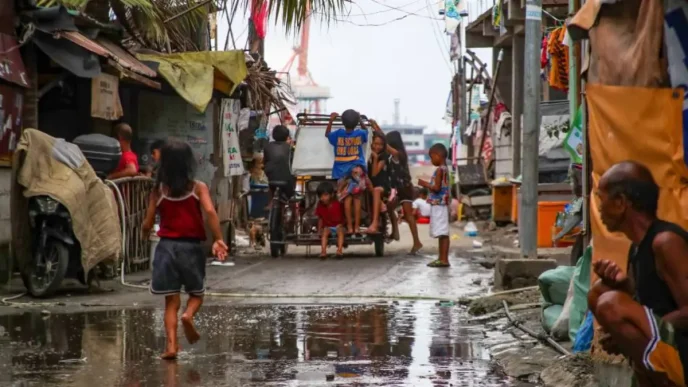In a haunting search for answers, the Philippine Coast Guard and the Philippine National Police (PNP) have been combing the depths of Taal Lake, following leads from a whistleblower about the fate of missing “Sabungeros”—individuals linked to cockfighting. Despite recovering numerous bone fragments and exhuming three bodies near the lake, authorities announced on August 1, 2025, that no DNA matches have been found to connect the remains to the families of the missing. The investigation, steeped in challenges due to contamination and prolonged submersion, underscores the difficulty of resolving cases of enforced disappearances in the Philippines.
Fragments from the Depths
The search in Taal Lake, located in Batangas province south of Manila, began in early July 2025, guided by information provided by whistleblower Julie Patidongan, also known by the alias “Totoy.” Patidongan claimed in a June 2025 interview with GMA News that the missing sabungeros were killed, tied to sandbags, and thrown into the lake. Acting on this tip, the Philippine Coast Guard deployed divers who recovered at least 91 bone fragments from five sacks earlier in the month. Additional fragments were retrieved on July 31, though the exact number and the count of sacks remain undisclosed.
Brig. Gen. Jean Fajardo, PNP spokesperson, revealed during a briefing at Camp Crame that the forensic analysis faced significant hurdles. “Accordingly, we could no longer extract any DNA profiles from the bones. It was already contaminated” she stated on August 1, 2025. She attributed the degradation to the prolonged submersion of the remains, noting, “The challenge there is that they were submerged for a long time.”
Of the fragments recovered, 45 came from the first sack found on July 10, while 46 more were retrieved from the fourth and fifth sacks on July 12. On July 15, the PNP Forensic Group determined that six of these fragments might be of human origin, raising hopes of identifying the missing individuals. However, the inability to extract viable DNA profiles has dashed those expectations for now.
Exhumed Bodies Offer No Clues
Parallel to the underwater search, authorities exhumed three bodies from a cemetery near Taal Lake on July 16, as announced by the Department of Justice (DOJ). Forensic analysis yielded DNA profiles for two males and one female, according to Brig. Gen. Fajardo. Yet, when these profiles were compared against 23 DNA references provided by families of the missing sabungeros, the results were negative. “It’s a negative when it comes to the matching of the pieces with the 23 DNA references of those who came forward” Fajardo explained during the briefing.
The discrepancy has left investigators and families grappling with more questions than answers. The DOJ has previously suggested a potential link between bodies found near Taal Lake and extrajudicial killings tied to the country’s drug war, though no conclusive evidence has been presented in this specific case. The lack of matches further complicates efforts to bring closure to the families of the sabungeros, whose disappearances have been shrouded in mystery and speculation.
A Whistleblower’s Revelation
The investigation hinges heavily on the testimony of Julie Patidongan, whose June 2025 interview shed light on the alleged fate of the sabungeros. Patidongan’s claims of murder and disposal in Taal Lake prompted the large-scale search operation, with divers meticulously following patterns based on the information provided. While authorities have not publicly detailed the full scope of Patidongan’s statements or their verification, the whistleblower’s input has been pivotal in directing resources to the lake.
The disappearance of Sabungeros has raised concerns about targeted violence, possibly linked to disputes or illicit activities surrounding the sport. Without DNA evidence or other corroborating findings, however, the exact circumstances of their fate remain elusive.
Forensic and Environmental Challenges
The forensic difficulties highlighted by Brig. Gen. Fajardo point to broader challenges in handling evidence recovered from aquatic environments. Taal Lake, known for its volcanic activity and scenic beauty, presents a uniquely harsh setting for preserving biological material. Prolonged exposure to water, combined with potential chemical interactions from the lake’s volcanic nature, likely contributed to the contamination of the bone fragments.
Experts in forensic anthropology note that DNA extraction from submerged remains is often a race against time. The longer the remains are underwater, the more likely it is that organic material degrades beyond recovery. In the case of Taal Lake, where depths and conditions vary, the task becomes even more daunting. While the PNP Forensic Group continues to analyze the fragments, the likelihood of identifying the remains through genetic profiling appears slim without advancements in technology or additional leads.
Broader Implications for Enforced Disappearances
The search in Taal Lake is emblematic of the Philippines’ ongoing struggle with enforced disappearances and unresolved cases of violence. Over the years, thousands of individuals have vanished under mysterious circumstances, often tied to political, criminal, or drug-related conflicts. The country’s history of extrajudicial killings, particularly during the height of the drug war under former President Rodrigo Duterte, has left a legacy of grief and unanswered questions for many families.
Human rights groups have long criticized the lack of accountability and transparency in such cases. The failure to identify the remains in Taal Lake, despite significant efforts, underscores systemic issues in forensic capacity and case resolution. For the families of the sabungeros, the negative DNA results are a painful reminder of the obstacles to justice in a country where disappearances are not uncommon.
The involvement of a whistleblower like Patidongan also highlights the reliance on individual testimonies in the absence of concrete evidence. While such accounts can catalyze investigations, they often lack the corroboration needed for legal proceedings or definitive conclusions. This dynamic places additional pressure on law enforcement to explore alternative methods, such as witness protection and cross-referencing historical data, to build stronger cases.
Community and National Response
The plight of the missing sabungeros has resonated with communities around Taal Lake, where local residents have expressed both sympathy and frustration. Cockfighting, despite its legal ambiguities in certain contexts, remains a cultural touchstone for many Filipinos, and the targeting of sabungeros strikes a personal chord. Public discourse on social media reflects a mix of anger over perceived impunity and calls for more robust investigations into disappearances nationwide.
At the national level, the case has drawn attention from policymakers and advocacy groups pressing for reforms in how missing persons cases are handled. The Department of Justice’s involvement suggests a recognition of the case’s gravity, though critics argue that more resources and international cooperation are needed to tackle the root causes of such violence. The intersection of crime, culture, and systemic issues in the Philippines makes the Taal Lake investigation a microcosm of larger societal challenges.
Looking Ahead
As the search in Taal Lake continues, the Philippine Coast Guard and PNP face an uphill battle to uncover the truth behind the missing sabungeros. The absence of DNA matches from the recovered remains and exhumed bodies is a setback, but not necessarily the end of the road. Authorities may yet turn to other forensic techniques, historical records, or additional witnesses to piece together the puzzle.
For now, the families of the disappeared wait in limbo, caught between hope and despair. The waters of Taal Lake, serene on the surface, conceal stories of loss that may never fully come to light. Whether this case will spur broader action on enforced disappearances in the Philippines remains an open question, one that carries profound implications for justice and accountability in the years ahead.















